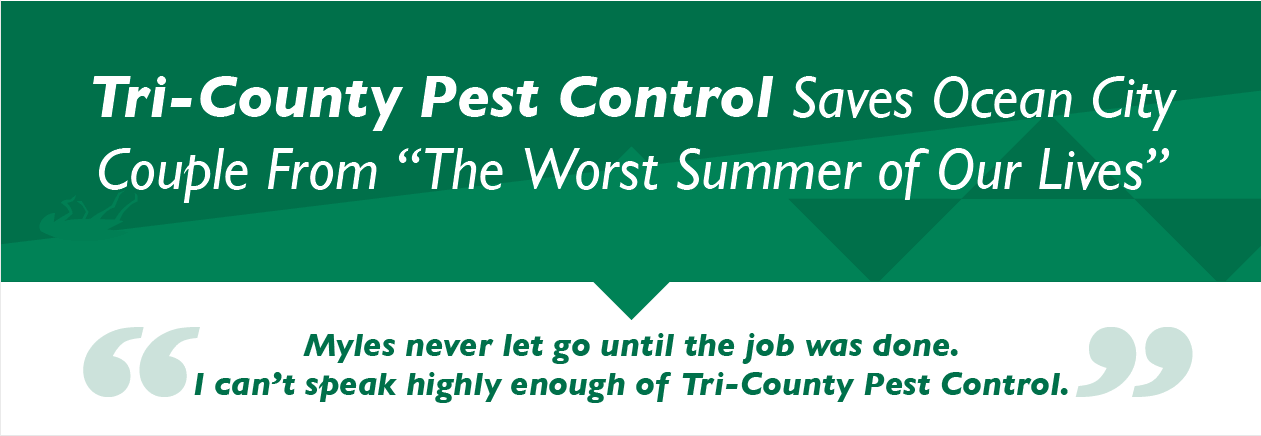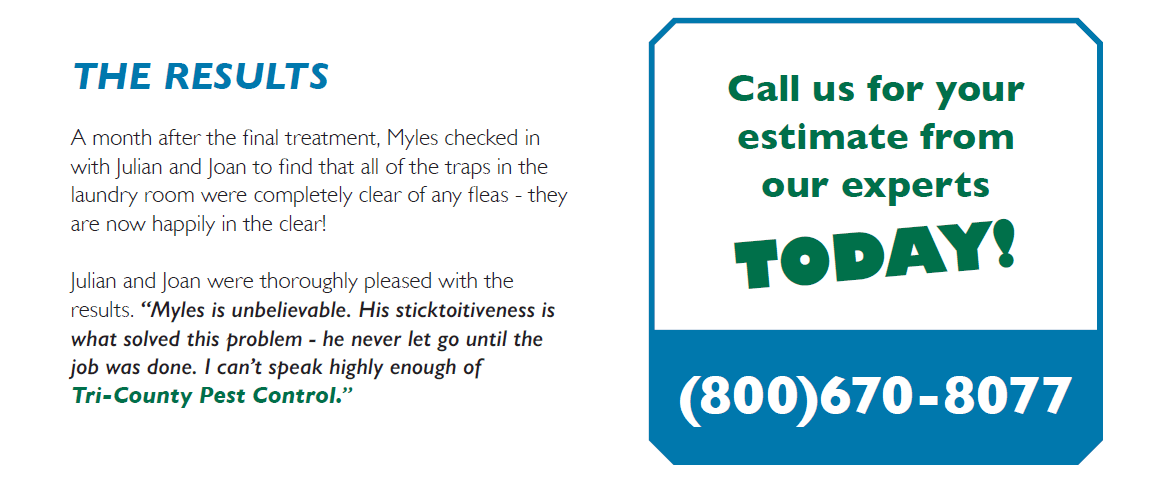

RESULTS SUMMARY
Married couple, Julian and Joan, endured 3 months of failed attempts to eliminate fleas by 2 big name national pest control companies.
Myles from Tri-County came in and quickly discovered the source of their flea issue. The problem was fully eliminated within 1 month of Myles’ first visit.

Pest Problem
There was a nasty flea infestation plaguing Julian and Joan’s lovely Ocean City home for over 3 months.
According to Julian, it “was the worst spring and summer of our lives.” Two big name national pest control companies tried and failed to eliminate the flea infestation.
The first company, who began treatment in May 2017 told Julian and Joan that the source of the infestation was “beach or sand fleas,” neither of which are a real species. They attempted treatment three times and claimed that it should have eliminated the problem. Unfortunately for Julian and Joan, substantial flea activity still remaind, so they brought in a second large corporate company.
Julian was understandably frustrated when, “the second guy that came through told us they weren’t even fleas!”
When the couple realized he was planning to take a “spray chemicals first” approach like the first company, they kindly declined his services and looked for an alternate solution to their problem. Nearly at the point of giving up, Julian and Joan contact Tri-County Pest Control.

FINDING THE SOURCE OF THE PROBLEM
At wits end after multiple failed attempts from two major firms, Julian decided to try a local pest control company. Myles, the service tech for Tri-County Pest Control, came in as the third pest control solution.
Before even starting his inspection, Myles immediately realized that something wasn’t adding up: the house was flea infested but Julian and Joan do not own any pets. For fleas to complete their life cycle ,there must be an animal present – fleas need a constant supply of blood to survive to adulthood.
Myles suspected, “because there were no pets, but clearly a nasty infestation of adult fleas, the source was likely to be an animal living underneath the house.”
He put on a protective suit to go under the house and inspect the crawl space. “Much of the crawl space was inaccessible because of low clearance,” Myles said, “But I could see a pile of droppings that confirmed my suspicion.”
TREATING THE ISSUE
Having identified the problem area and most likely the source of fleas, Myles was ready to get to work on a solution. Tri-County prides itself on a scientific, fact finding approach to pest control. Rather than soaking the entire house with chemicals, Myles carefully isolated the source, selected the optimal techniques to eliminate the fleas, and safeguarded Julian and Joan’s home from any risk of re-population.
Myles began with treating the crawl space where the problem originated, hanging DDVP strips around where the droppings were spotted. Next, he treated the laundry room with an insecticide and insect growth regulator (IGR), a product which prevents immature fleas from becoming reproductive adults by mimicking the juvenile growth hormone.
Myles followed up with two more treatments of insecticide and IGR over the next 3 weeks. Following each round of treatment, he swept up all the dead fleas and placed monitors so that any new activity would be easily recognized. After the 3rd treatment, the flea issue was completely eradicated!



